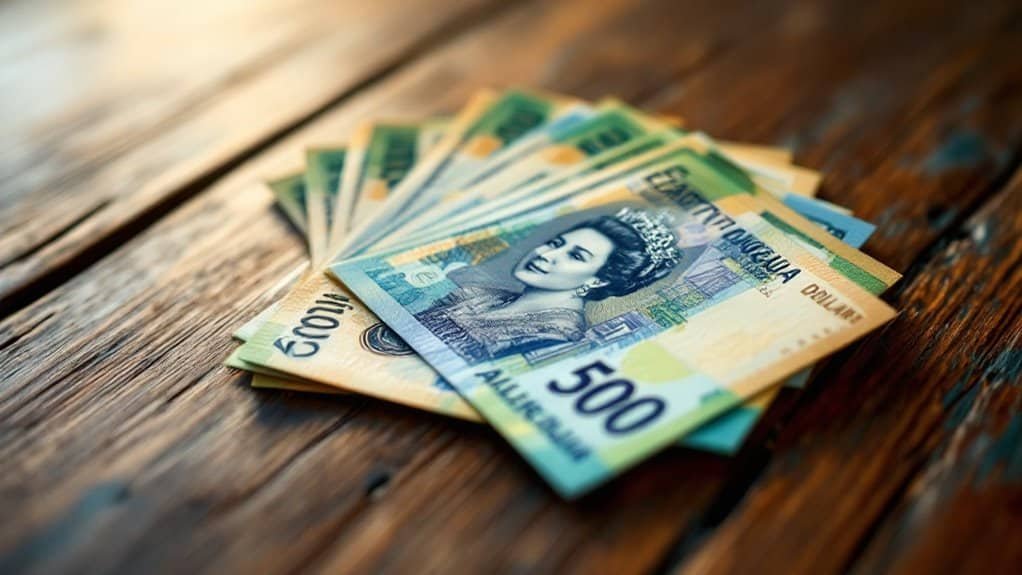
If you're traveling to Antigua, you'll use the Eastern Caribbean Dollar (XCD), a stable currency managed by the Eastern Caribbean Central Bank. Fixed at 2.70 XCD per USD since 1976, this currency serves eight Caribbean economies, ensuring regional financial consistency. You'll find banknotes in 5, 10, 20, 50, and 100 Dollar denominations, featuring advanced security elements like holographic foils. When exchanging money, expect standard bank rates with minimal fluctuation. Credit card acceptance varies, so carry both USD and XCD. Understanding this currency's nuanced framework will reveal deeper insights into the region's sophisticated monetary ecosystem.
Key Takeaways
- The Eastern Caribbean Dollar (XCD) is the official currency used in Antigua and Barbuda, maintained by the Eastern Caribbean Central Bank with a fixed exchange rate of 2.70 XCD per USD.
- Antigua uses banknotes in 5, 10, 20, 50, and 100 Dollar denominations, featuring advanced security elements like holographic foils and Braille to prevent counterfeiting.
- Travelers can exchange currency at local banks, with consistent rates across financial institutions and minimal transaction fees compared to airport exchange services.
- The XCD serves multiple Caribbean nations, promoting regional economic integration and financial stability through a coordinated monetary policy and unified currency system.
- When visiting Antigua, it's recommended to carry a mix of USD and XCD, use bank ATMs for withdrawals, and inform your bank about international travel to ensure smooth transactions.
What Is the Eastern Caribbean Dollar?
The regional currency powerhouse, the Eastern Caribbean Dollar (XCD), stands as a pivotal financial instrument in the Caribbean economic landscape. Introduced in 1965, it replaced the British West Indies Dollar and represents a strategic monetary solution for the Eastern Caribbean Currency Union (ECCU). Regional financial integration has been a critical driver in the XCD's development, fostering economic cooperation among member states.
Its currency features include a fixed exchange rate pegged at 2.70 XCD to 1 USD, providing economic stability across member nations. Managed by the Eastern Caribbean Central Bank, the XCD addresses critical economic challenges through standardized monetary policies.
Its denominations—coins from 1 to 100 cents and banknotes ranging from 5 to 100 Dollars—facilitate uniform transaction practices. The currency underpins key regional industries like tourism and agriculture, while offering a mechanism to control inflation and maintain fiscal coherence in this complex economic environment.
Countries and Territories Using XCD
Understanding the Eastern Caribbean Dollar's (XCD) usage requires examining its geographic and economic distribution across multiple Caribbean nations and territories. The XCD is accepted in five independent countries and two territories, strategically located in the Eastern Caribbean region.
These locations share critical economic characteristics:
- Integral members of the Eastern Caribbean Currency Union
- Leveraging XCD for regional trade and financial stability
- Maintaining a consistent exchange rate with the US dollar
Your comprehension of XCD acceptance reveals a sophisticated monetary network spanning the Lesser Antilles. The countries include Antigua and Barbuda, Dominica, Grenada, Saint Kitts and Nevis, and Saint Lucia.
Territories using XCD are Anguilla and Montserrat. This monetary arrangement facilitates economic integration, supports local financial systems, and provides a stable currency framework for these Caribbean nations. The Eastern Caribbean Central Bank plays a crucial role in managing and stabilizing this shared monetary system.
Currency History and Central Bank
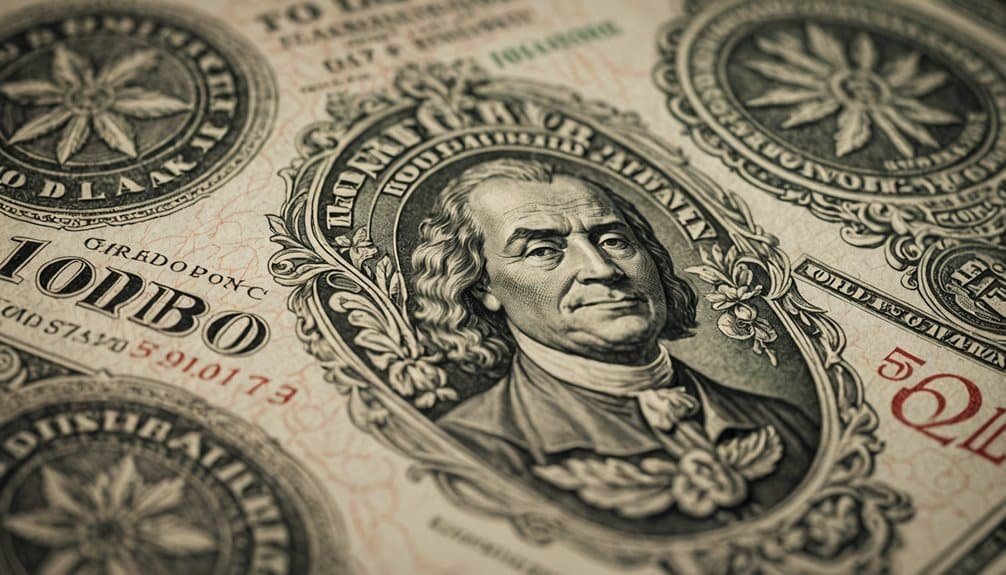
Nearly seven decades of monetary evolution mark the Eastern Caribbean dollar's rich historical trajectory, tracing its roots from the British West Indies dollar to today's sophisticated regional currency system.
The currency shift began in 1965 when the British West Indies dollar was replaced, following a complex monetary union that had existed since 1935.
The Eastern Caribbean Currency Authority (ECCA) emerged in March 1965, managing the regional currency until 1983, when the Eastern Caribbean Central Bank (ECCB) was established in Basseterre, Saint Kitts and Nevis.
This institutional evolution reflects a strategic approach to regional financial integration, with the ECCB serving eight island economies and maintaining the currency's stability through rigorous monetary governance and coordinated economic policies. The ECCB's founding member states played a crucial role in creating a unified monetary framework that would support economic development across the Caribbean region.
Exchange Rate and Economic Stability
You'll find the Eastern Caribbean Dollar's fixed exchange rate to the US Dollar creates a robust economic framework that stabilizes monetary conditions across the region.
This strategic currency peg guarantees you can confidently engage in trade and investment with minimal exchange rate volatility. The currency converter tool enables precise and real-time conversion calculations, supporting financial transparency across Caribbean territories.
Fixed Rate Mechanics
Since the introduction of the Eastern Caribbean dollar (XCD) peg to the US dollar in 1976, the fixed exchange rate has served as a cornerstone of monetary stability for the OECS/ECCU region. Current market tracking reveals that the exchange rate remains consistently stable at 1 XCD = 0.3704 USD.
The mechanism maintains a constant conversion rate of US$1 = XCD 2.70, providing predictability in international transactions and economic interactions.
Key aspects of this fixed rate regime include:
- Quasi-currency board management by the Eastern Caribbean Central Bank
- No significant real appreciation or overvaluation of the currency
- Full convertibility and sustained external balance
The fixed exchange rate strategy guarantees currency valuation remains consistent, mitigating potential economic disruptions.
By maintaining a stable monetary framework, the XCD supports regional trade, financial sector development, and economic integration across the Eastern Caribbean states.
This approach demonstrates a sophisticated monetary policy that balances regional economic needs with international financial dynamics.
Currency Stability Impact
The Eastern Caribbean Dollar's fixed exchange rate serves as an essential stabilizing mechanism for the region's economic landscape.
You'll find that its unwavering 2.7 XCD per USD since 1976 provides currency confidence and exchange predictability vital for small, open island economies.
The quasi-currency board arrangement managed by the Eastern Caribbean Central Bank guarantees stability that directly supports tourism-dependent economies and reduces monetary volatility.
Moreover, the OECS/ECCU region has maintained low inflation rates averaging just 2.7% between 1990 and 2009, further reinforcing the currency's credibility and economic resilience.
Trade Investment Protection
Building on the stabilizing mechanism of the Eastern Caribbean Dollar's fixed exchange rate, the region's trade and investment protection strategy emerges as a sophisticated economic shield.
You'll find the peg to the US dollar effectively mitigates trade benefits and minimizes investment risks through strategic monetary design. Foreign reserve strength has been critical in maintaining this economic resilience, with the ECCB consistently maintaining reserves over 90% of the required threshold.
Key protective mechanisms include:
- Reducing exchange rate volatility for foreign investors
- Maintaining robust foreign reserve levels
- Creating predictable economic environments
Coins, Banknotes, and Denominations
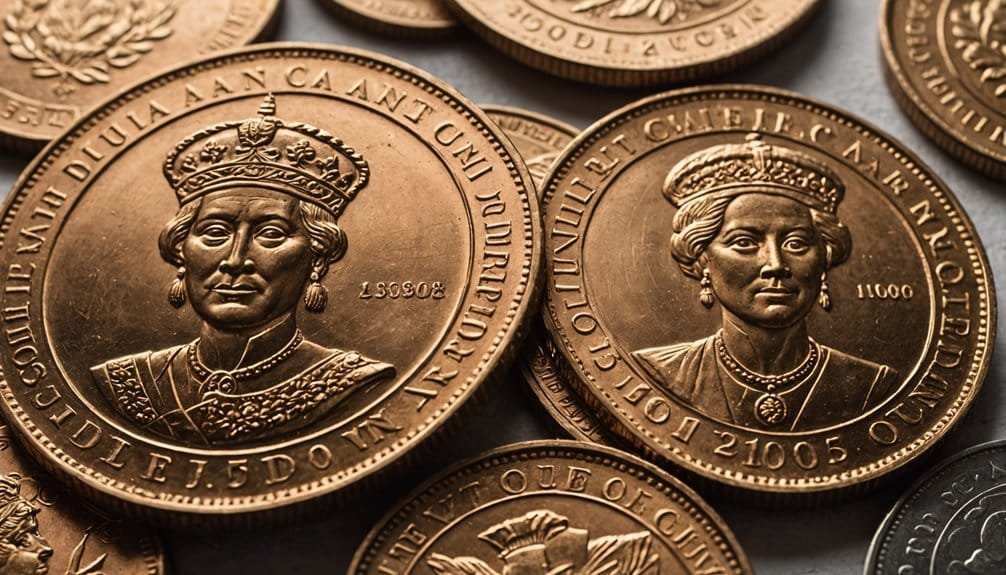
Currency pulses through Antigua's economic veins, manifesting in a robust system of coins and banknotes managed by the Eastern Caribbean Central Bank (ECCB). Historical Currency Transitions have played a crucial role in shaping the modern monetary landscape of the region.
Your local transactions will involve coins ranging from 1 to 25 cents and 1 Dollar, each featuring unique design elements representing regional diversity. Complementing these coins, banknotes denominated in 5, 10, 20, 50, and 100 Dollars provide critical monetary infrastructure.
Banknote security stands as a paramount concern, with advanced features like holographic foils and Braille elements protecting against counterfeiting. The polymer substrate enhances durability, while intricate designs showcase national symbols and historical figures.
These notes, fixed at an exchange rate of 2.70 XCD per USD, reflect the region's economic stability and sophisticated monetary strategy, ensuring reliable financial transactions across Eastern Caribbean Currency Union member states.
Where to Exchange Your Money
When exchanging money in Antigua, you'll find bank exchange rates are typically fixed at EC$2.70 per US$1.00, providing a consistent and predictable conversion metric. Local banking regulations strictly control these exchange rates, ensuring transparency for travelers and residents alike.
Airport currency services, however, often impose considerably higher transaction fees and less favorable rates, making them a suboptimal choice for currency conversion.
To maximize your financial efficiency, prioritize bank exchanges and research current market rates before initiating any monetary transactions.
Bank Exchange Rates
Maneuvering the maze of currency exchange in Antigua requires strategic planning and knowledge of local banking institutions. Understanding bank exchange rates is essential for travelers seeking ideal financial transactions. The fixed exchange rate of EC$2.70 per US$1.00 provides a stable conversion metric, regulated by the Eastern Caribbean Central Bank. Del Arco Street Branch offers additional currency exchange services for travelers seeking convenient transaction locations.
Key considerations for currency exchange include:
- No markup or hidden bank fees during transactions
- Consistent rates across major banking institutions
- Predictable exchange limits for international travelers
When exchanging currency, prioritize established banks like Eastern Caribbean Amalgamated Bank, Antigua Commercial Bank, and Scotia Bank. These institutions offer transparent, reliable exchange services without unexpected charges.
ATMs provide additional convenience, supporting MasterCard and VISA for direct currency conversions, ensuring you maximize your financial resources while maneuvering Antigua's monetary landscape.
Airport Currency Services
After maneuvering bank exchange rates, travelers will find airport currency services at V.C. Bird International Airport offering multiple exchange options. Currency conversion fees vary across different platforms, with careful comparison essential for ideal financial strategy.
| Location | Availability | Exchange Rate Efficiency |
|---|---|---|
| Airport Offices | Peak Hours/24/7 | Moderate |
| Exchange Machines | Limited Hours | Variable |
| Hotel Services | Restricted Times | Lower Rates |
Automated machines and bank-operated offices provide Eastern Caribbean Dollar exchanges, accepting major credit/debit cards. While convenient, these airport exchange options often include higher transaction costs. International travelers should anticipate potential fees ranging from 3-7% per transaction. Strategic planning involves understanding each service's specific rates, transaction limits, and operational hours to minimize unnecessary currency conversion expenses.
Tips for Travelers and Spending
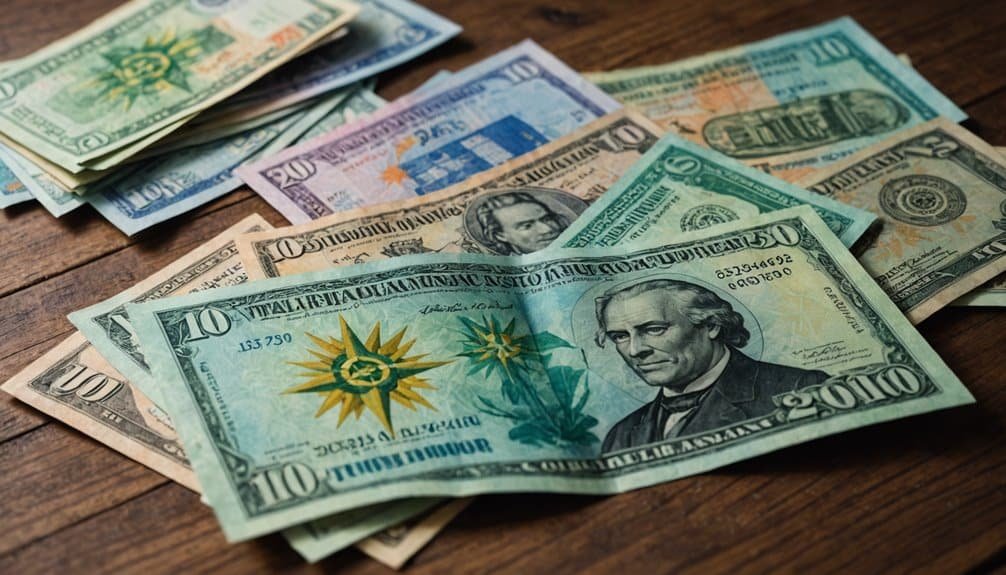
Managing financial transactions in Antigua requires strategic preparation and understanding of local currency dynamics. Your travel budgeting should prioritize cash tips and smart spending strategies. Eastern Caribbean Dollar (XCD) serves as the primary local currency, providing travelers with a stable and widely accepted monetary option.
Consider these critical considerations:
- Carry a mix of USD and XCD to maximize transaction flexibility
- Inform your bank about international travel to prevent card interruptions
- Withdraw moderate amounts from ATMs to minimize risk of loss
Credit card acceptance varies across the island, with major establishments readily accommodating electronic payments while local vendors often prefer cash.
Banks provide the most reliable exchange rates, making them preferable to small businesses for currency conversion.
Anticipate potential transaction challenges by planning ahead, maintaining financial awareness, and carrying sufficient local currency to navigate Antigua's diverse economic landscape effectively.
Conclusion
When you explore Antigua's currency landscape, the Eastern Caribbean Dollar (XCD) stands as a symbol of regional economic unity. Like a well-oiled financial machine, this currency connects eight nations through a shared monetary system. You'll find its strength isn't just in paper and coins, but in the collective economic resilience of the Caribbean community. Understanding its nuances can transform your travel experience from mere observation to genuine economic insight.

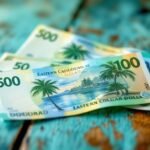

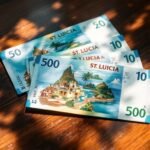

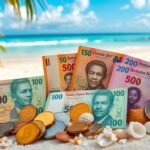

Interesting article! But Im wondering, with digital currencies gaining global acceptance, whats the future of the Eastern Caribbean Dollar? Itd be intriguing to see your insights on this.
Interesting read on the Eastern Caribbean Dollar. But hey, isnt it surprising that despite having their own currency, many of these countries still heavily rely on the US dollar? Economic dependency, anyone?
Interesting read! Ever thought about how the XCD exchange rate might affect tourism in these regions? Lets discuss, folks!
XCD exchange doesnt make a dent. Its all about the experience, not the price!
Interesting read! But why isnt there mention of inflation rates affecting the Eastern Caribbean Dollars value? Seems crucial to understand its economic status.
Interesting read but, why isnt there more focus on the impact of tourism on the Eastern Caribbean Dollar? Just a thought.
Interesting article, but why didnt it discuss the impact of tourism on the value of the Eastern Caribbean Dollar?